When you are a plant owner, there will be times when you want to or need to propagate your plants. Maybe a leaf falls off your plant, or maybe you just trim some off to make new plants. Whatever the case may be, this article will be about the different ways to propagate a rubber plant.
You might even have a friend who is willing to share a cutting from their own rubber plant for you to propagate. This would be a great way to try propagating a rubber plant if you don’t own one yourself. And it is free to try!
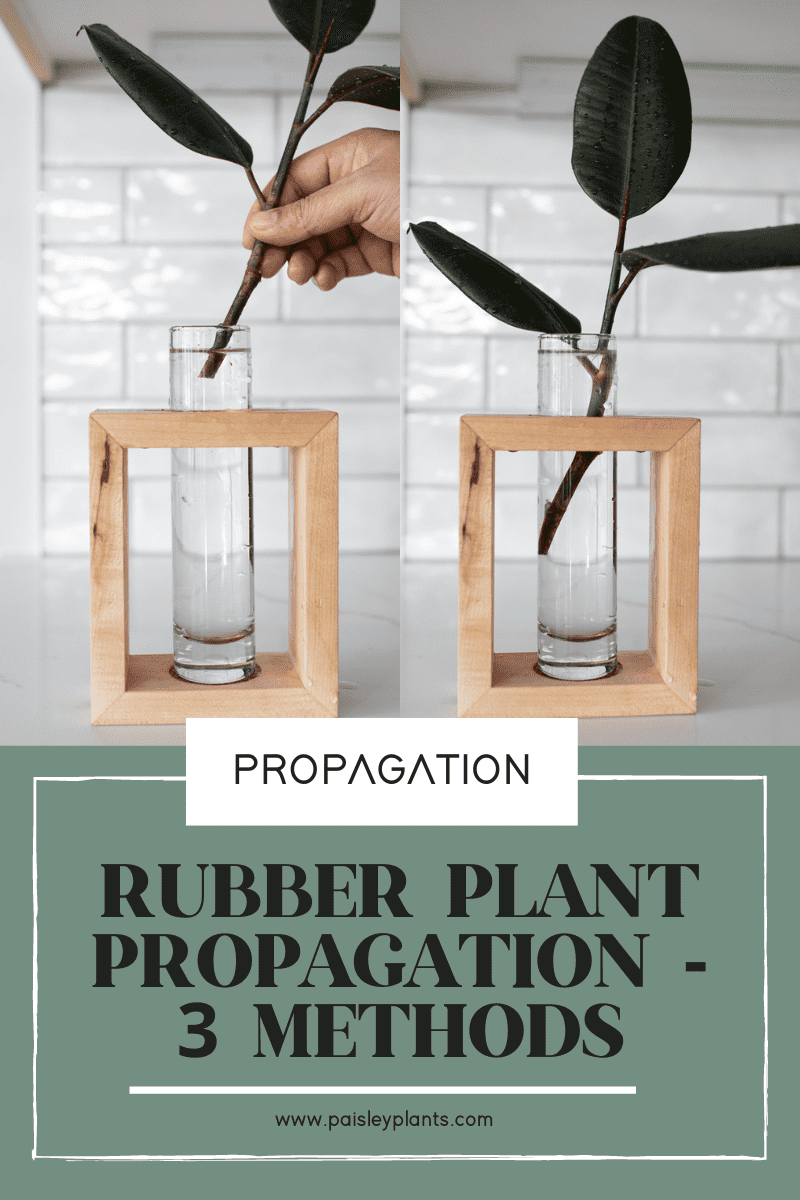
Table of Contents
What to Know About Rubber Tree Plants
One of the first things I want to discuss is the rubber tree plant, or ficus elastica, itself. Rubber tree plants can be very large plants that have large glossy leaves that give them their name!
If you own one of these indoor plants, you may already know that the sap on these plants is very sticky, milky and runs out quite prolifically when the leaves fall off. If this sap comes into contact with your skin, it can cause irritation. Also, it can cause vomiting or diarrhea if you get it in your mouth.
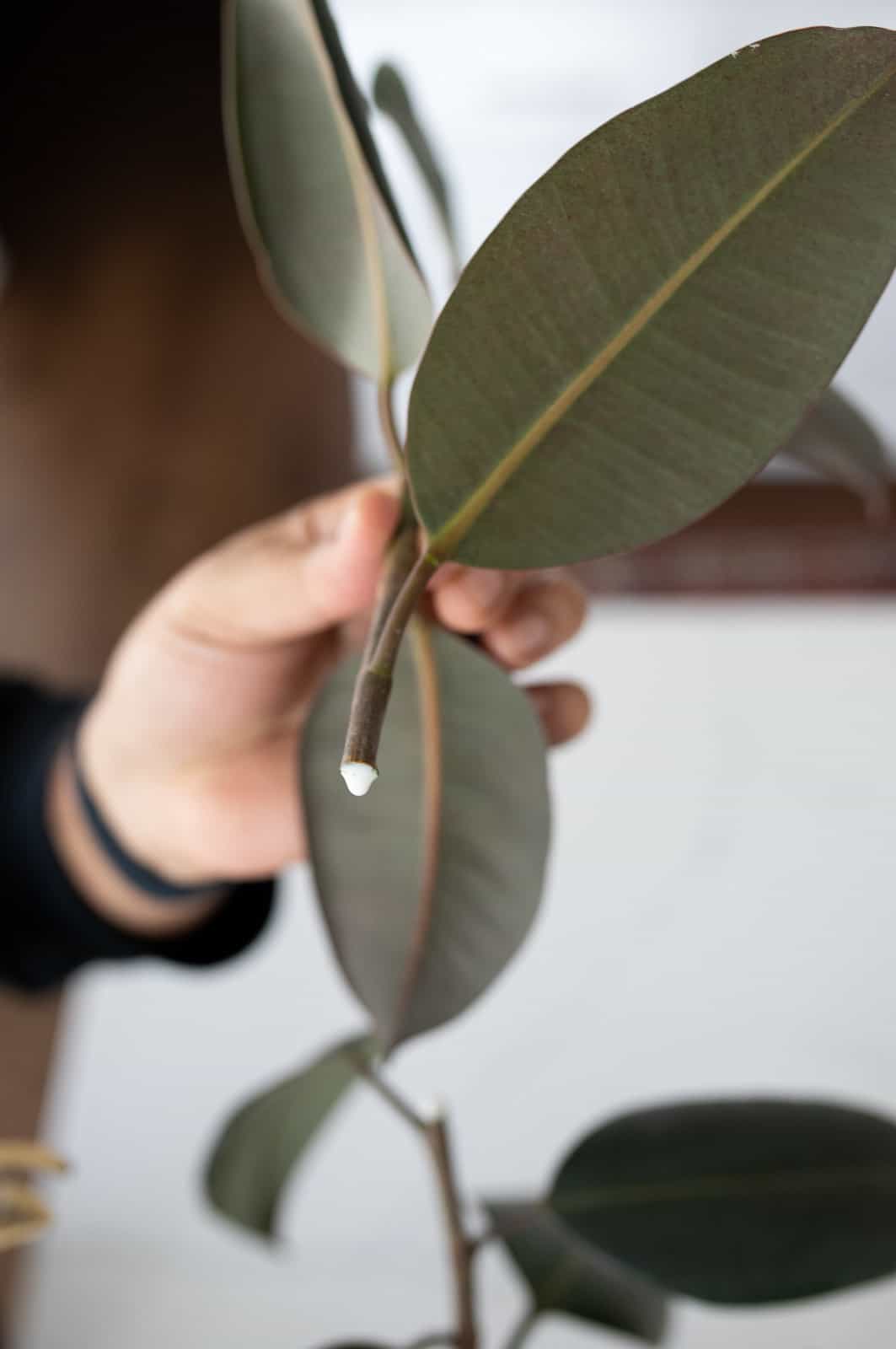
Thankfully, it is only mildly toxic, but this should be kept in mind when handling the leaves of the rubber plant. Now that we have established this fact, we can talk about how to propagate the leaves for new plants.
This should also be kept in mind when owning a rubber plant if you have small children or pets. It is toxic to them also and should be kept away from them, especially when the leaves fall off the plant and the sap tends to run out of the exposed stem.

You will also want to protect the surface of the table or counter that you are working on from the sap. The sap will make a mess of any surface it comes into contact with, so take a few steps before you start working to protect it. Use a few layers of newspaper to protect it and you’ll be good!
It would also be a good idea to wear protective gloves when you are working with the leaves to avoid getting sap on your skin, especially if you have sensitive skin. Of course, this is a personal choice, but it can prevent you from having any skin irritation from the sap.
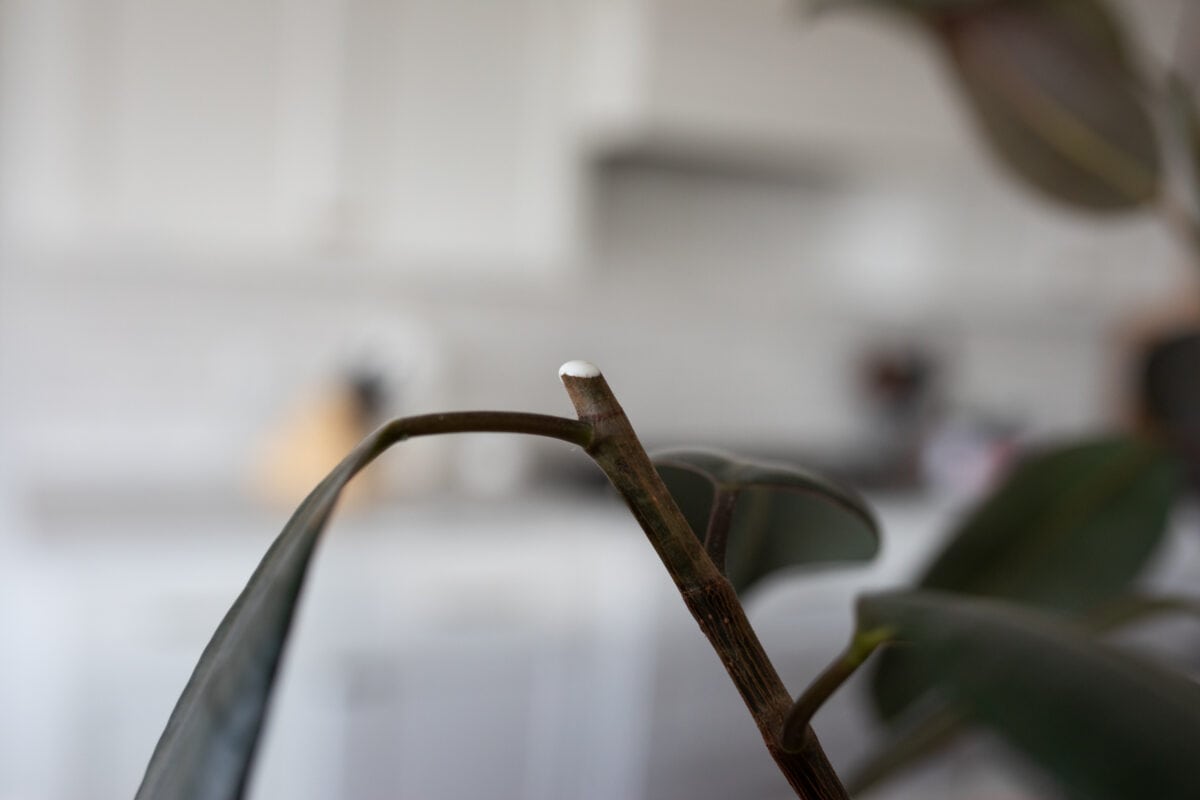
The best time to propagate your plant is in the early spring to late summer months. This will give your plant time to take hold and do well because it is the prime growing season during those months.
You’ll need to cut off the top of the stem with several leaves attached. Individual leaves are able to grow leaves but unless they have a part of the stem attached they will not grow at all. Once you make your cutting, remove the bottom leaves from the plant and wash the sap from the stem.
Rubber Plant Propagation
There are a few different methods when it comes to rubber plant propagation. There’s water propagation, soil propagation and air layering. We’ll discuss all 3!
Water Propagation
First up, the water method. I personally like this method the best because I can see the roots forming! Before you take any leaves off the parent plant, be sure to identify the leaf nodes along a healthy stem. This will be where the new roots will eventually grow. The stem cuttings should be about six inches long and have at least four leaf nodes to ensure success for the new cutting to grow properly.
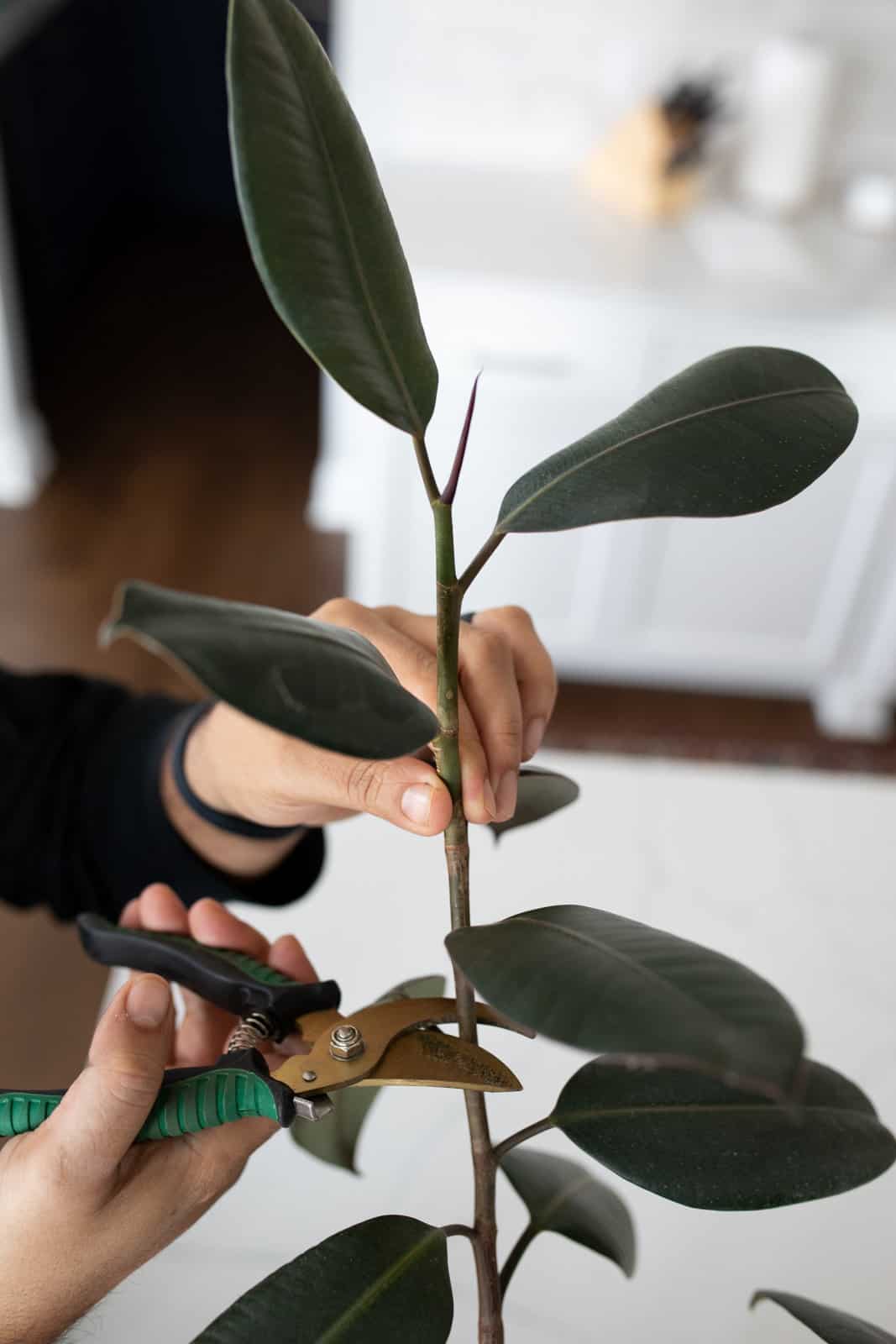
Take the portion you cut off the mother plant and place the stem in water. You should begin to see roots growing on your cutting within a few weeks. It can take longer, but you can check to see when the roots begin to grow if you use a glass jar or propagation station to root them in.
One thing to keep in mind is that when you propagate in water, your leaves are susceptible to rotting. Keep the water fresh and keep an eye on them so that they don’t rot. You should change the water at least weekly so it doesn’t get funky. You should start to see roots within a month or so.
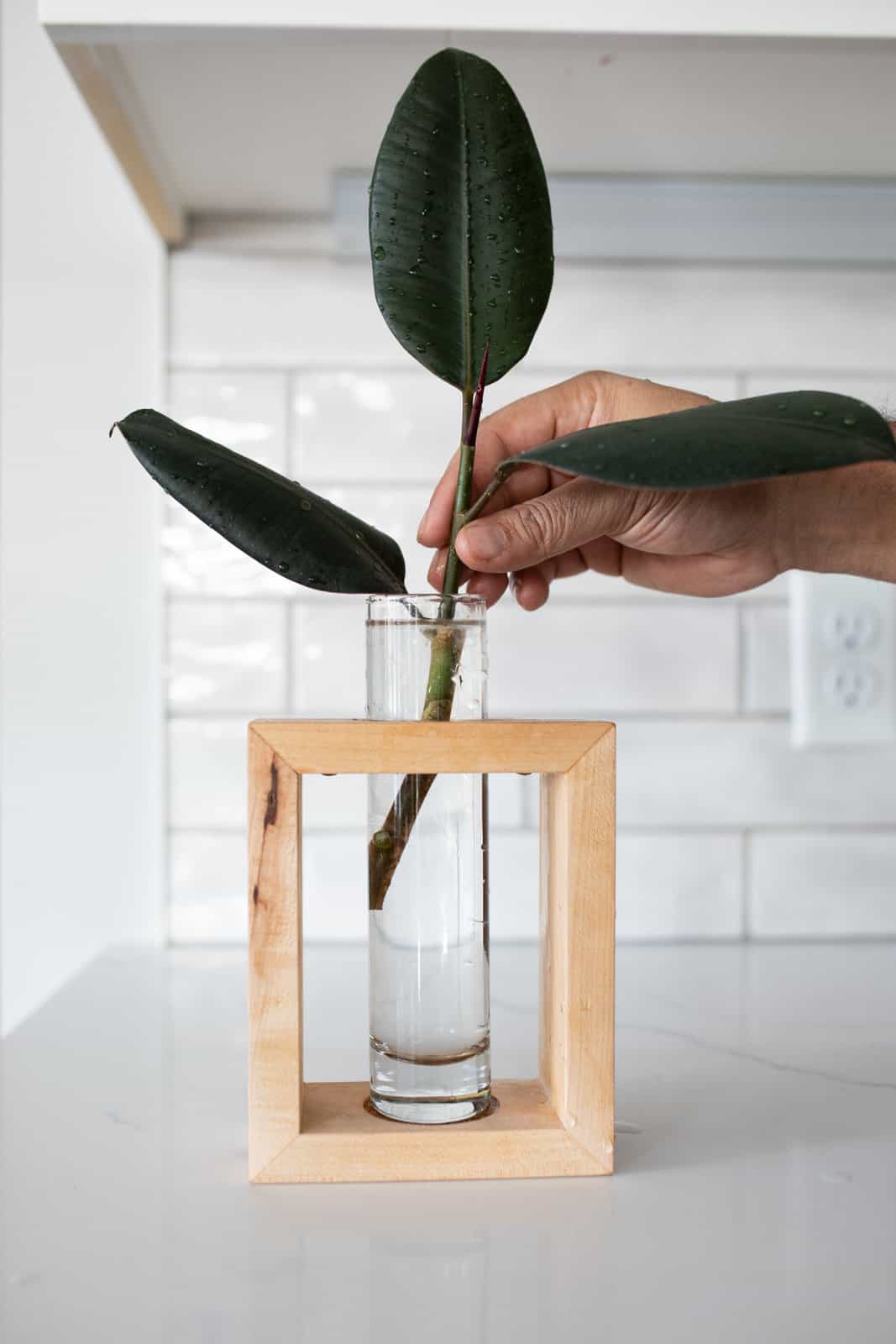
Once you see roots, your cutting is ready to plant in soil. You can dip the roots into rooting hormone powder before you put it into the soil to help it take hold. Be sure to use well draining soil when you plant your cutting. The cutting should take hold in the soil in about a week’s time.
Soil Propagation
If you want to try soil propagation, you can also do this. You will need to basically follow the same steps as you do for water propagation when it comes to cutting the piece to root. You will need to be sure that you use a well draining soil to put your rubber tree cuttings into.
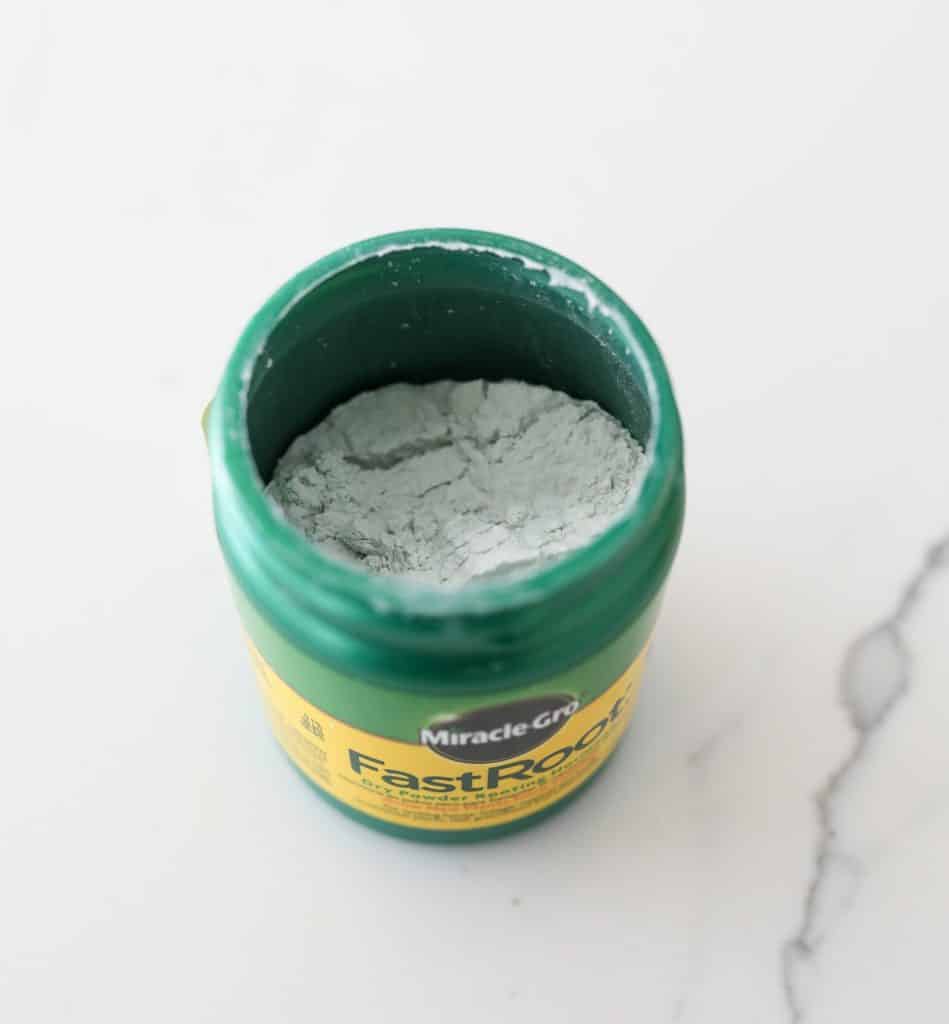
Before you put the cut end of your stem cutting into the soil, dip the cut end of the stem into rooting hormone powder. This will aid in more rapid growth for your cutting. The cutting will take time to root this way, but your patience will pay off. It may take several months for you to see any new growth from this cutting.
Air Layering
The final propagation method is air layering. This method is another way to grow roots to get another new rubber tree plant. You will need to have a fairly mature plant to do this type of propagation.
The first thing you will need to do is find a mature enough plant that is healthy. There is no point in trying to air layer a rubber plant that is not healthy. This will just be an exercise in futility!
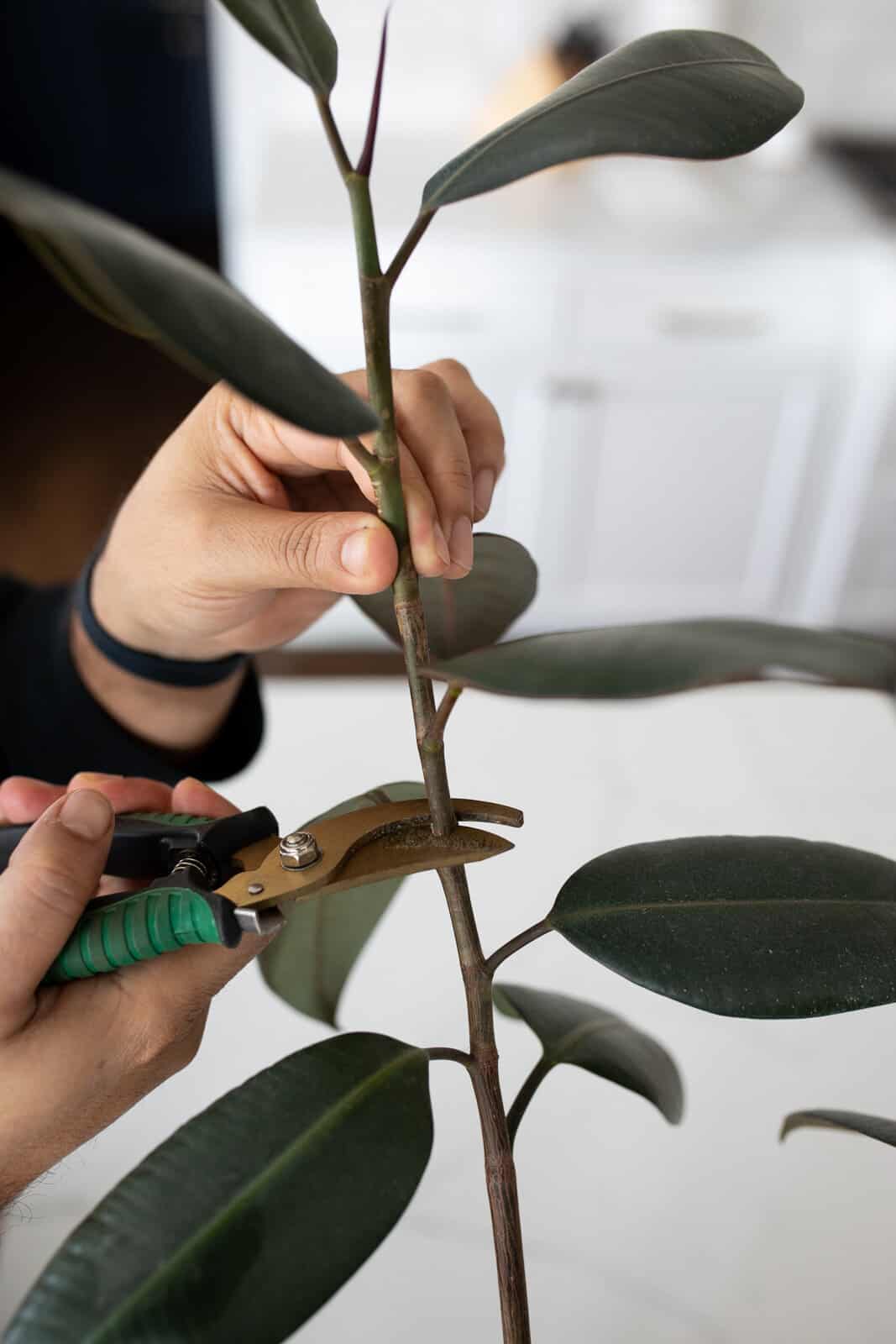
You will need a sharp knife, some rooting hormone, some peat moss or coco coir to soak and wrap your cut, and a small plastic bag or plastic wrap to cover the moist moss. You will also need some twist ties or twine to tie the plastic bag/wrap around the moss.
First of all, you will need to soak your peat moss for about a half an hour to be sure it is nice and moist prior to using it. Identify where on the plant you will be making the cut. It should be in between two nodes. Once you identify where you want to make the cut, remove the leaves around that area to give you room to work.
Make two separate cuts about an inch apart all the way around the stem. Be careful not to cut too deeply into the stem or you will damage it. Depending on the thickness of the stem, the cut should only be about ¼” or less thick.
Once you have your two cuts, pull the bark away from the stem to expose the bare internal portion of it. You will be left with a wound that exposes the white tissue, called the cambium, below it. Now, you can take either a small paintbrush or a Qtip and brush the rooting hormone onto the exposed flesh of the stem.
Wrap the moist moss around the stem, completely covering it several inches thick. You want to be sure to keep this portion of your plant moist during the entire rooting process. Take the clear plastic bag or wrap and wrap it fairly tightly around the moss to keep the moisture inside. Use the twist ties or twine to secure the plastic in place.
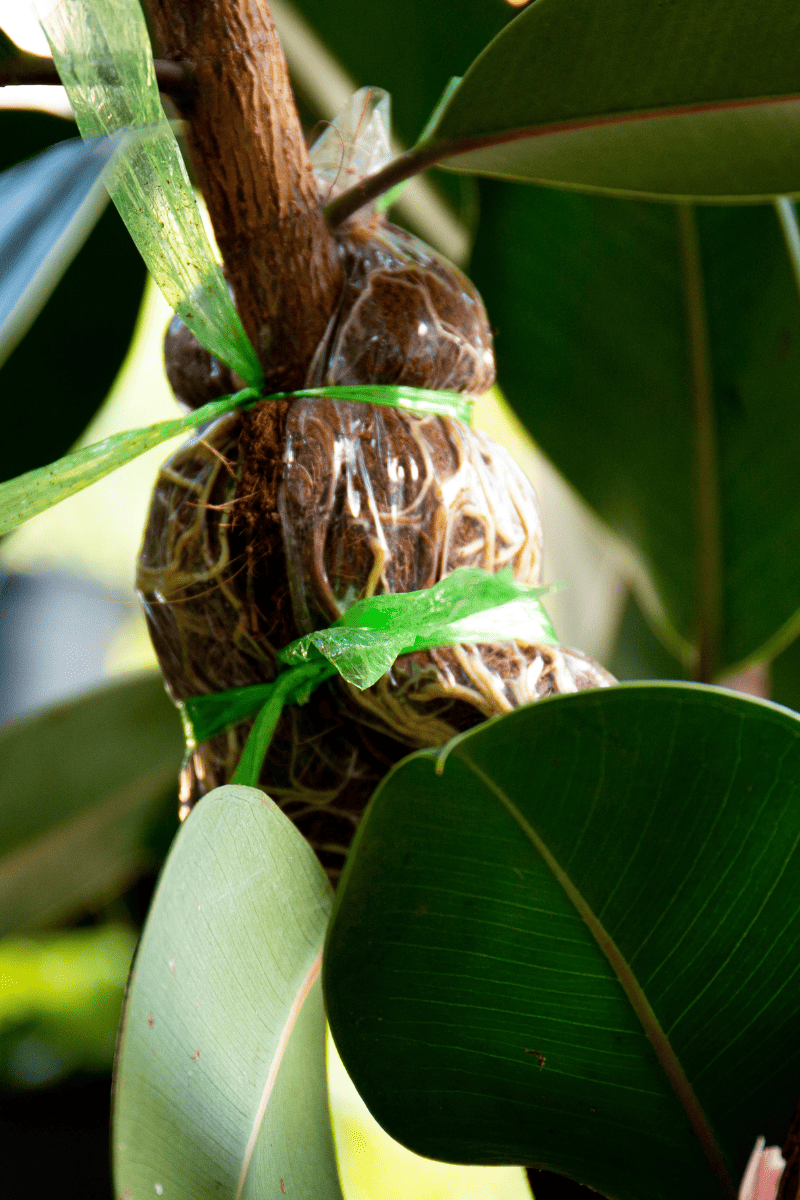
Place your plant back in a spot where it gets bright, indirect light and be sure to keep it watered properly. You will want to check it occasionally to see that the moss ball is retaining moisture. Unwrap the plastic and add more water, if necessary.
Within a few weeks, you should notice that new small roots are forming. This process can typically take anywhere from 2-3 months, so be patient!
Once the root ball has sufficient roots that are growing through the moss, you will be ready to remove the top air-layered portion from the original plant. Make the cut just below the new root ball and above the first leaf node where the air layer wound was made, cutting it off horizontally.
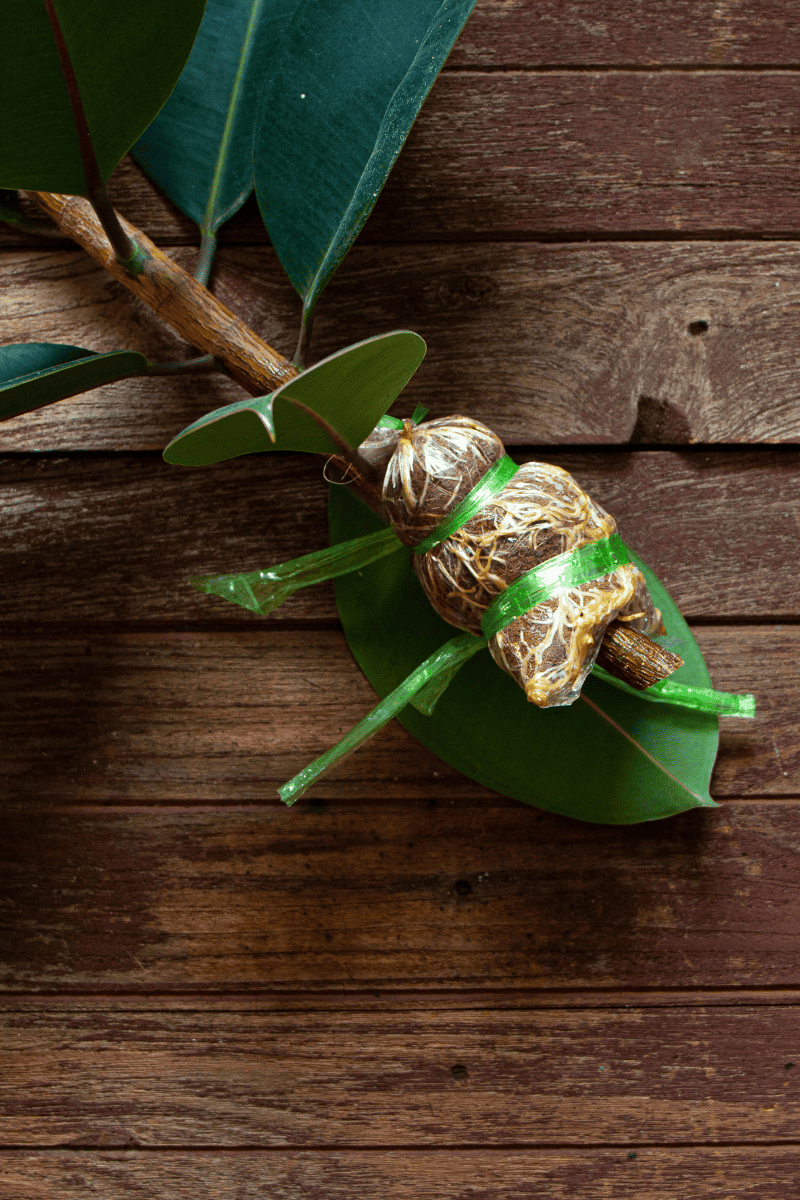
Your new plant is now ready to be potted in its new container! Use well draining soil just like your original rubber plant. Allow your plant to establish itself in its new container for a few weeks and be sure it has good drainage in the bottom of the pot.
You will also soon see the original plant pushing new growth from the nodes below the air layered cut you made. These will eventually turn into new branches each with their own growth tip.
Rubber Plant Care
Rubber plants are fairly easy to grow. They like an ample amount of light and consistent (but not too much) watering.
Go read our full rubber plant care guide!
In Conclusion
Rubber Plants are very beautiful plants and add a lot of interest to most settings. They are relatively easy to keep and also fairly easy to propagate. You need to remember to keep the leaves dusted off as they will gather dust and need the oxygen for proper growth.
You will have to decide which method of propagation you want to try. Maybe you will have to experiment a few times to see which one works best for you. But, in the long run, this will be one of the easiest plants to propagate. As always, keep on growing!
